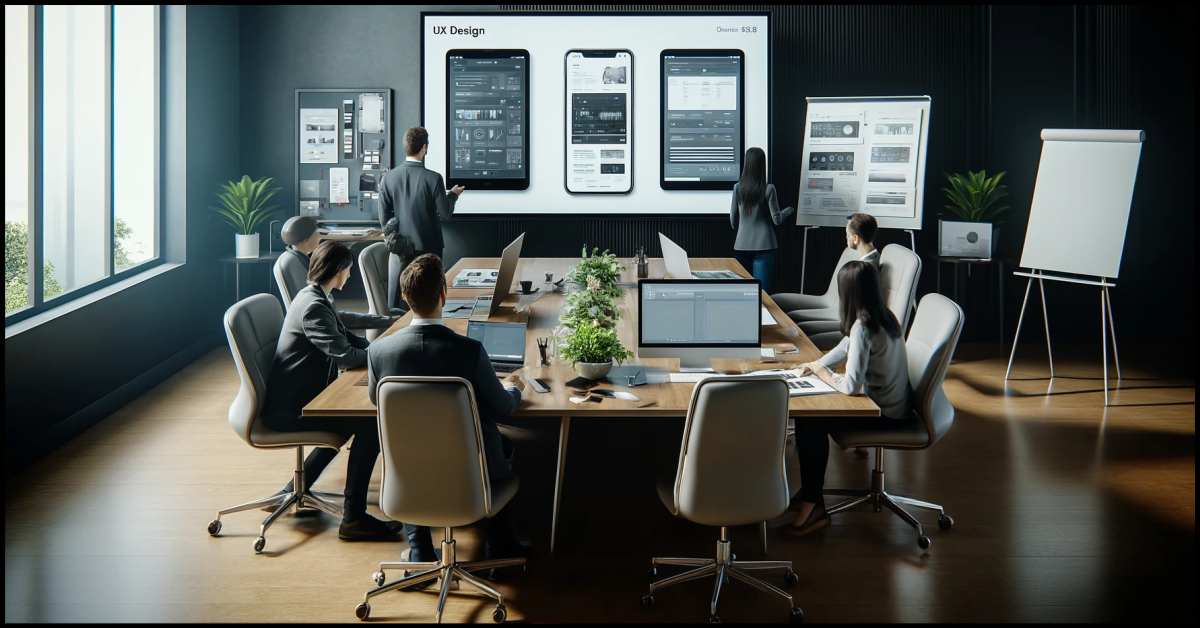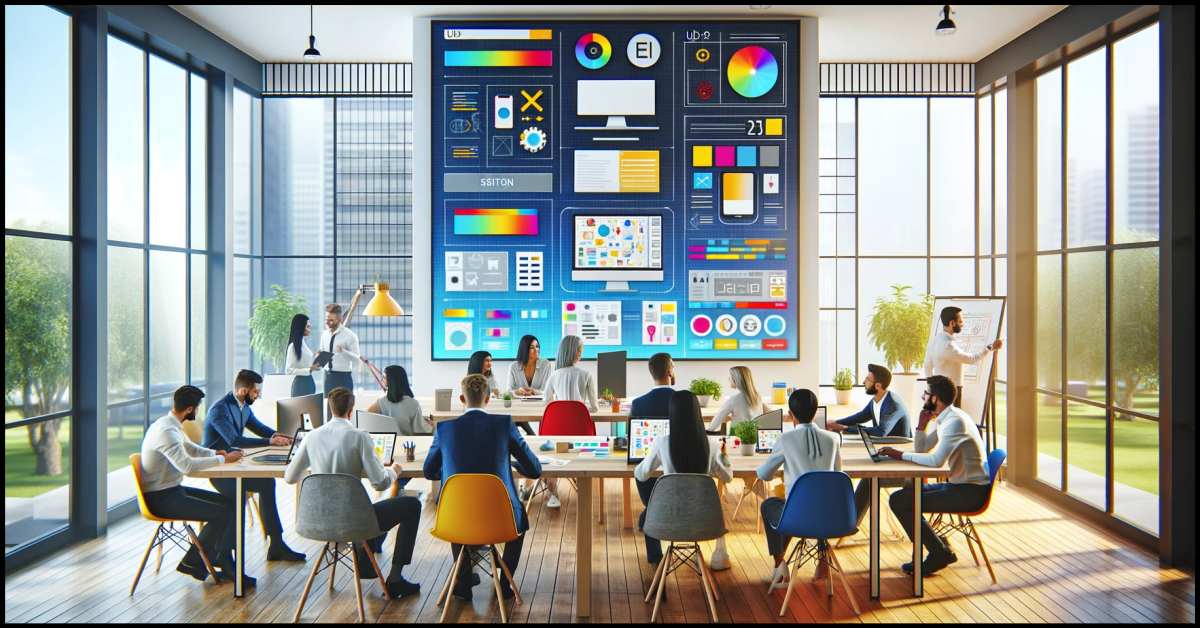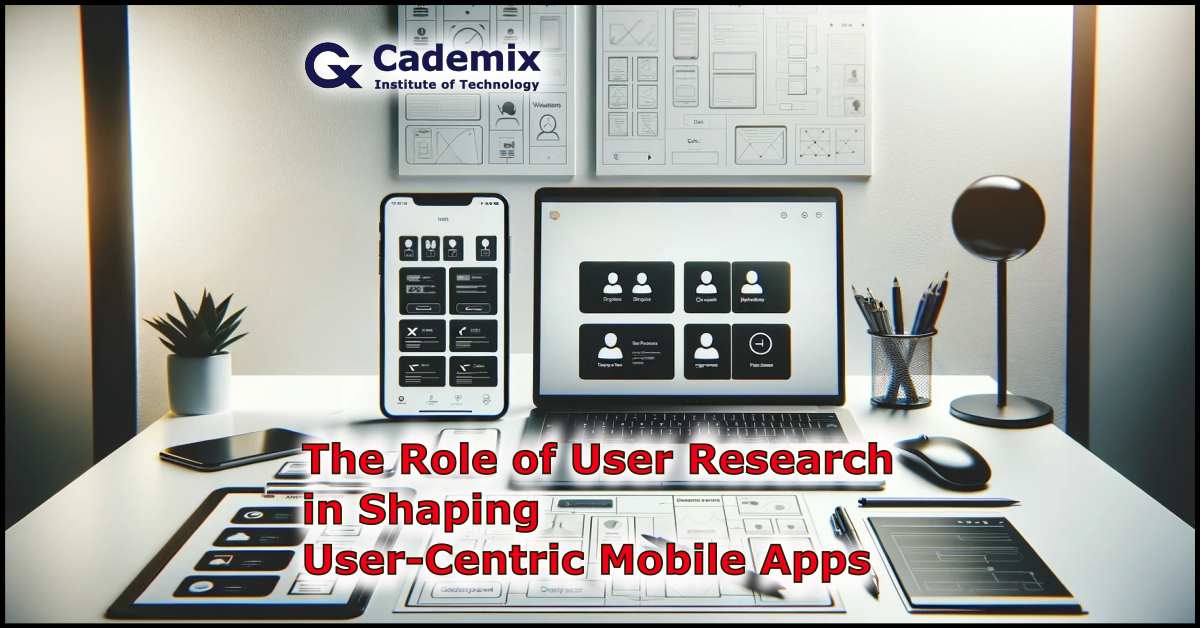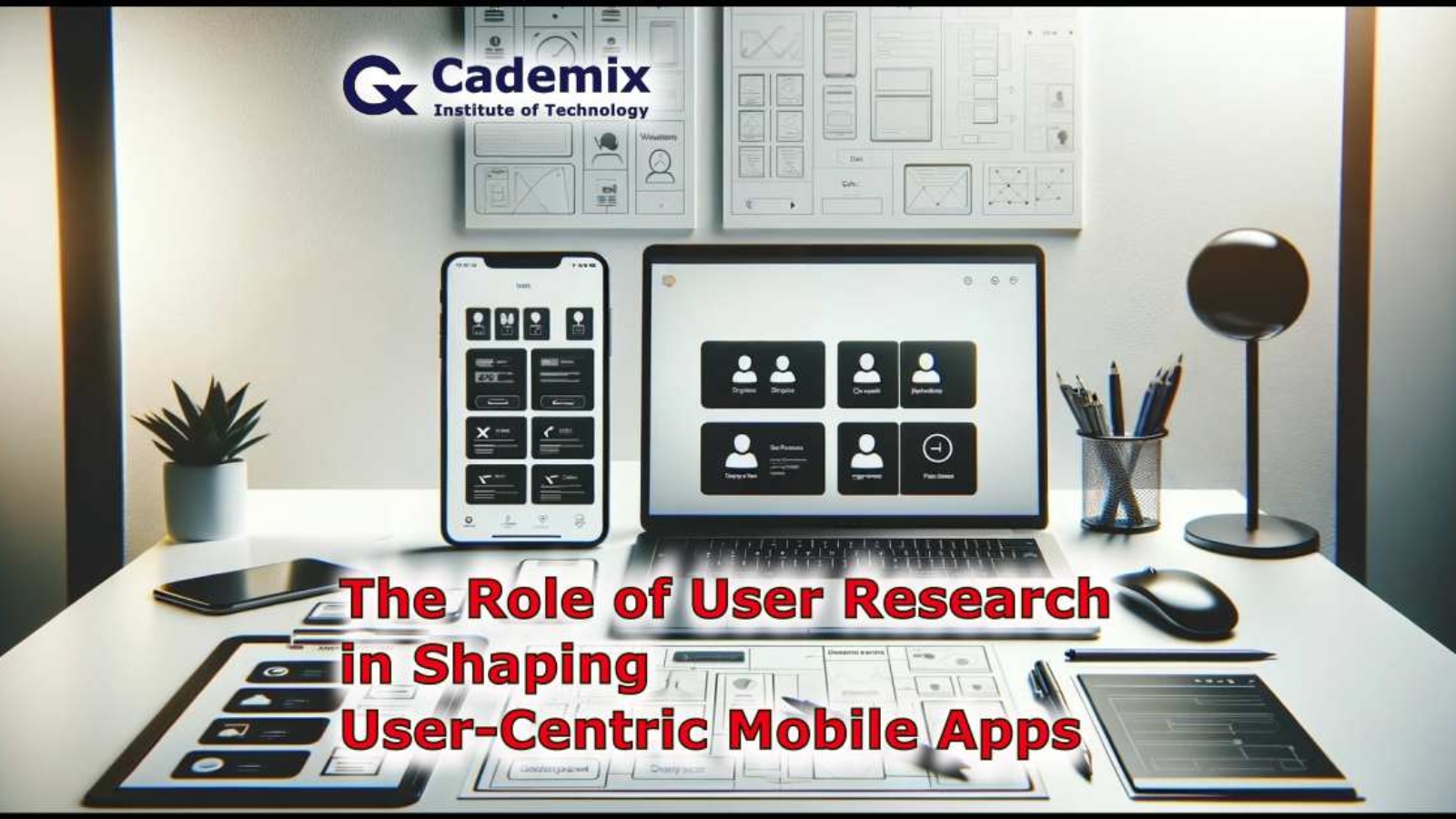In the rapidly evolving field of mobile app development, user research stands as a cornerstone in creating user-centric designs that cater effectively to end-user needs. This article delves into the integral role of user research in shaping mobile applications, exploring various UX research methods, usability testing techniques, and the application of UX design frameworks and tools like Figma. Through a discussion on the collaboration within cross-functional teams and the integration of agile methodologies, the article highlights how user research informs design decisions, enhances user interface integration, and upholds UX design best practices to improve the overall user experience.
By Samareh Ghaem Maghami, Associate Technical and Interior Designer at Cademix Institute of Technology

Introduction
In the ever-evolving world of technology, UX design and UX research play pivotal roles in creating mobile applications that are not only functional but also deeply resonate with users. By integrating comprehensive UX research methods, designers and developers gain critical insights into user behaviors and preferences, shaping the design process to ensure optimal usability and satisfaction. This article delves into the essential components of UX design and the transformative power of UX research, highlighting how these practices come together to develop user-centric mobile apps. With a focus on practical examples and innovative strategies, we explore the dynamic interplay between user research and design frameworks, ultimately enhancing the user experience in meaningful ways.
User Research in Mobile App Development
In the dynamic landscape of mobile app development, understanding and implementing a user-centered design process is paramount. The foundation of any successful mobile application lies in its ability to resonate with its users, which is achieved through meticulous user research. This research encompasses a range of UX research methods that are critical for developing deep insights into user needs and behaviors.
User Persona Development
User Persona Development is a key aspect of user research, enabling developers and designers to create detailed profiles of typical app users. These personas guide every stage of the design process, ensuring that features are tailored to meet the specific needs of the target audience. By leveraging tools like Figma for UX Design and other UX Prototyping Tools, designers can visualize solutions that directly address the user’s pain points, enhancing the overall usability of the application.
Delving deeper into the User-Centered Design Process, UX Research Methods are indispensable tools that enrich our understanding of user expectations and requirements. By employing both qualitative and quantitative research methods, developers and designers gain insights that are not only profound but also actionable. These methods, which include interviews, surveys, and usability tests, are pivotal in shaping the features and functionality of mobile apps, ensuring they align perfectly with user demands.
UX Research Methods and Tools
UX Design Frameworks serve as the blueprint for constructing user-friendly apps. These frameworks support UX Design Collaboration among cross-functional teams, fostering a cohesive environment where insights from user research are shared and integrated effectively. The integration of the User Interface (UI) within these frameworks is crucial, as it ensures that the app is not only functional but also intuitive and engaging for users. Wireframing in UX plays a critical role in this phase, laying the groundwork for effective UI integration and helping to map out the user journey before full-scale development begins.
Adherence to UX Design Accessibility Standards ensures that mobile apps are accessible to a broader audience, including those with disabilities. This inclusivity is a critical factor in the widespread adoption and success of a mobile app. Similarly, Responsive Design for UX ensures that apps provide a seamless experience across different devices and screen sizes, which is essential in today’s multi-device world.
Each element of user research and UX design contributes to a holistic development approach that prioritizes the user at every step, making User-Centered Design Processes not just a standard but a necessity in crafting successful mobile applications.

Key Components in Mobile App
UX Design Frameworks are essential structures that guide the comprehensive development of mobile apps. These frameworks help in organizing the approach to UX Design, ensuring consistency across various stages of app development. Effective use of these frameworks facilitates UX Design Collaboration among Cross-functional UX Teams, which is critical for integrating diverse insights and expertise. Collaboration within these teams fosters a dynamic exchange of ideas, enhancing creativity and innovation in app design.
User Interface (UI) Integration in UX Design is crucial for creating intuitive and engaging mobile apps. A well-integrated UI is seamless and makes the user’s interaction as simple and efficient as possible. Wireframing in UX plays a vital role here, serving as a preliminary visual guide that outlines the structural layout of the app. This step is crucial for addressing potential usability issues early in the development process, thus enhancing the User-Centered Design Process.
To ensure that mobile apps are accessible to all users, including those with disabilities, adhering to UX Design Accessibility Standards is paramount. These standards help in designing apps that are usable for everyone, which significantly widens the user base and fosters inclusivity. Additionally, Responsive Design for UX is critical in ensuring that mobile apps provide a consistent experience across different devices and screen sizes. This adaptability is essential for meeting the modern user’s expectations for accessibility and usability, regardless of the device they use.
Each of these components frameworks, UI integration, and accessibility—are interlinked and contribute to the robustness of the User-Centered Design Process. By meticulously implementing these components, UX Design for Mobile Apps not only meets but exceeds user expectations, ensuring both functionality and satisfaction.

Techniques and Innovations
Usability Testing Techniques are crucial in the User-Centered Design Process for mobile apps. They provide direct insights into how real users interact with the app, highlighting areas for improvement. Techniques such as A/B testing, user interviews, and task analysis are vital in refining the User Interface (UI) Integration and enhancing the overall UX Design. These methodologies allow teams to test hypotheses about user behavior and preferences, ensuring that the final product aligns well with the expectations of its target audience.
Incorporating Agile Methodologies
Agile Methodologies are increasingly becoming integral to UX Design for Mobile Apps due to their flexibility and efficiency. Incorporating agile practices into the UX Design Project Management process allows for a more iterative and responsive design cycle. Agile teams can quickly adapt to changes in user feedback, market trends, or technological advancements, making it an ideal approach for the fast-paced world of mobile app development. The synergy between Agile Methodologies and UX Research Methods enhances the ability to rapidly prototype, test, and refine app features, ensuring a highly adaptive and user-focused product development cycle.
These sections of the article highlight how user research is not just about collecting data, but about actively applying this data to create more effective, user-friendly mobile applications. Through Usability Testing Techniques and the integration of Agile Methodologies, mobile app developers and designers can ensure their products are not only functional but also fully aligned with user needs and expectations. This strategic approach to design and development underscores the importance of user research in building successful, user-centric mobile apps.

The Future of UX Design in Mobile Apps
Emerging Trends and Innovations in UX Design are shaping the future of mobile applications. As technology evolves, so do the opportunities for creating more sophisticated and user-friendly interfaces. Innovations such as voice user interfaces, augmented reality (AR), and virtual reality (VR) are becoming more integrated into mobile UX design. These advancements offer new ways to enhance user engagement and provide more immersive experiences. Digital Product UX Strategies are increasingly incorporating these technologies to stay ahead in a competitive market, ensuring that apps remain relevant and appealing to tech-savvy consumers.
Career Opportunities in UX Design
The growing importance of UX Design in Mobile Apps has led to a surge in UX Design Career Opportunities. As businesses recognize the value of user-centered design, the demand for skilled UX professionals continues to rise. Career paths in this field are diverse, ranging from UX researchers and UI designers to UX project managers and strategy consultants. These roles emphasize the need for a deep understanding of both UX Research Methods and UX Prototyping Tools, as well as the ability to apply UX Design Best Practices in real-world scenarios.
The outlook for UX design is one of continuous growth and innovation. As user expectations evolve and new technologies emerge, the role of UX designers will become increasingly complex and integral to the success of mobile applications. This section not only highlights the current state and future possibilities in UX design but also underscores the ongoing need for professionals who can navigate the challenging landscape of user expectations and technological advancements.
Conclusion
The strategic integration of User Research in the development of mobile applications is indisputable in its importance. By embracing comprehensive UX Research Methods, designers and developers gain invaluable insights that directly influence UX Design Frameworks and the overall User Interface (UI) Integration process. The article has explored various facets of this integration, from Usability Testing Techniques to the deployment of UX Prototyping Tools like Figma, which collectively ensure that the final products are not only functional but profoundly user-centric.
Through User-Centered Design Processes, mobile apps are tailored to meet the exact needs of their target audience, enhancing user satisfaction and engagement. This approach not only improves the usability of apps but also their market viability. As the digital landscape continues to evolve, the role of user research in app development will only grow in relevance, necessitating ongoing innovation and adaptation in UX Design Practices.
Furthermore, the increasing integration of Agile Methodologies within UX Project Management highlights the industry’s shift towards more dynamic and responsive development cycles. This adaptability is crucial in responding to user feedback and emerging market trends promptly and effectively.
In conclusion, user research is the cornerstone of successful mobile app development. It fuels the continuous improvement of UX Design, ensuring that apps not only meet but exceed user expectations. As we look towards the future, the fields of UX Design and Research promise exciting new developments and career opportunities, urging professionals to continually adapt and innovate in their practices.

About the Author
Samareh Ghaem Maghami is a master’s student in eco-design at FH Wiener Neustadt, Austria, with a profound background in painting and a keen interest in user experience design. Having worked extensively in roles that require a high degree of creativity and user interaction, such as interior decorating and event management, Samrah brings a unique perspective to the field of UX design. Her academic and professional experiences have honed her skills in creating environments and products that resonate with users, aligning perfectly with her studies in eco-design.
She is also an Associate Technical and Interior Designer at Cademix Institute of Technology and a member of the Cademix Career Autopilot Program.in Austria. For more insights on UX design and to follow her journey through the world of eco-conscious design innovations, connect with her on LinkedIn: https://www.linkedin.com/in/samareh-ghaem-maghami or contact her through:
E-mail: sam.gh.maghami@gmail.com
E-mail: samareh.ghaem-maghami@cademix.org
Xing: https://www.xing.com/profile/Samareh_GhaemMaghami

